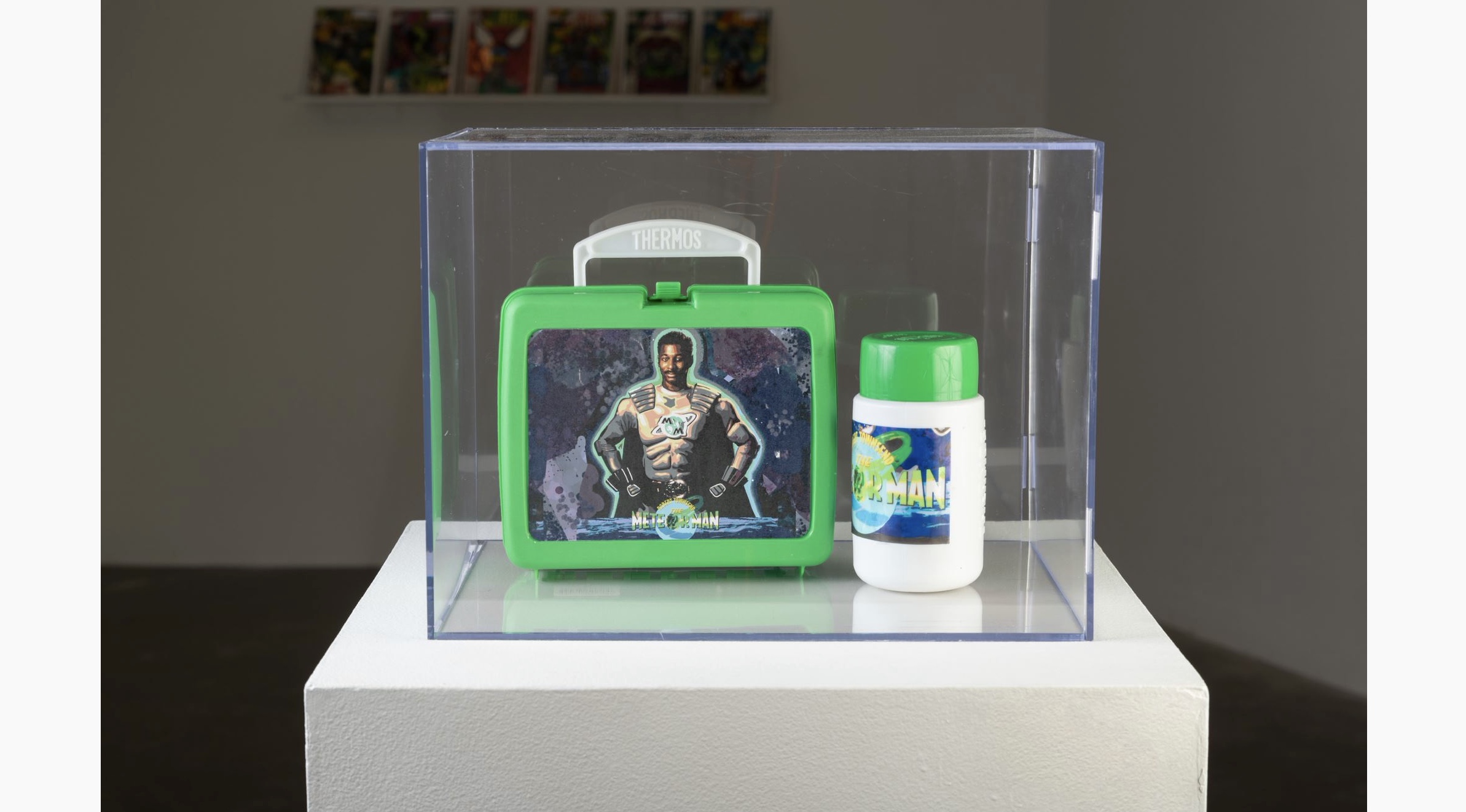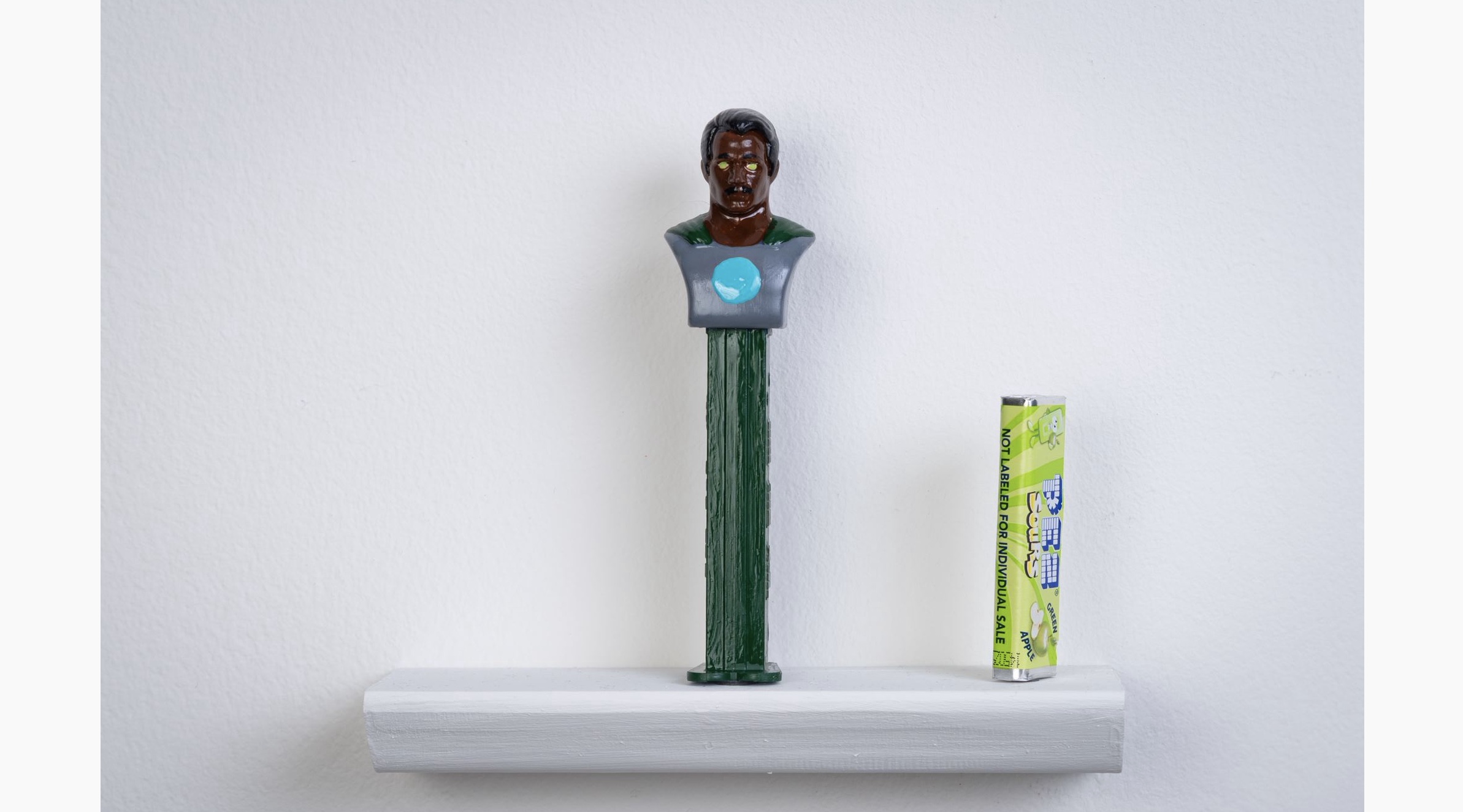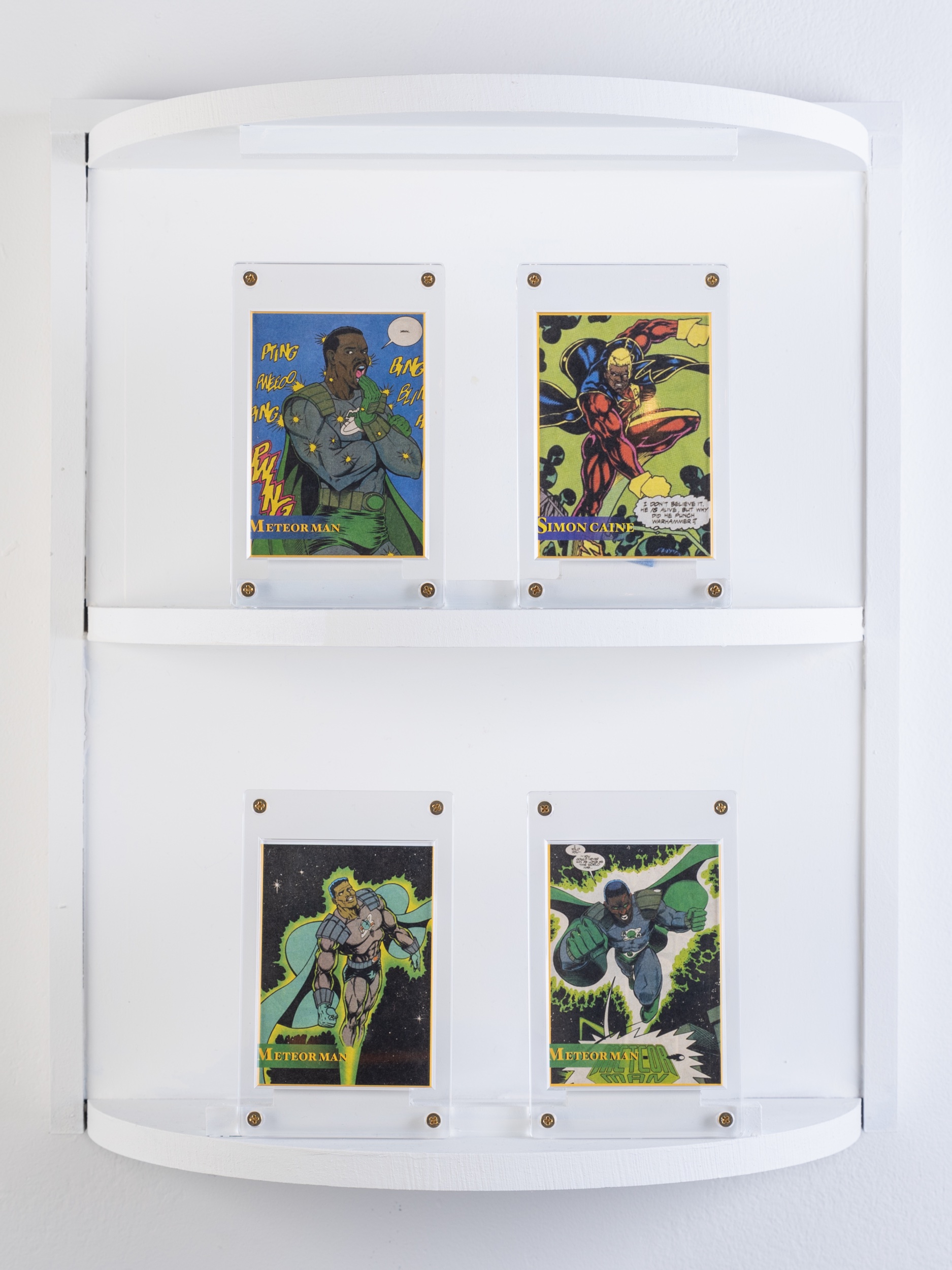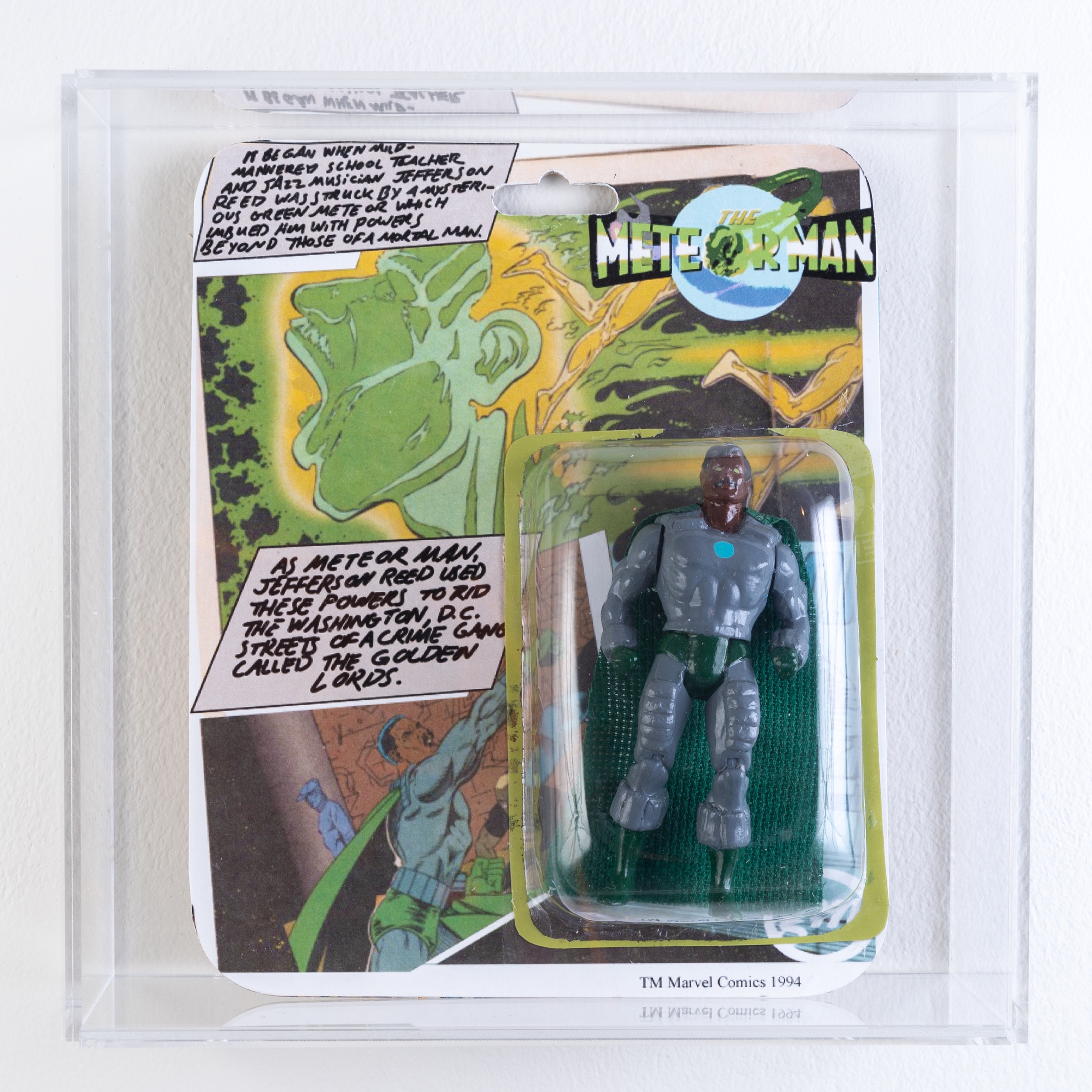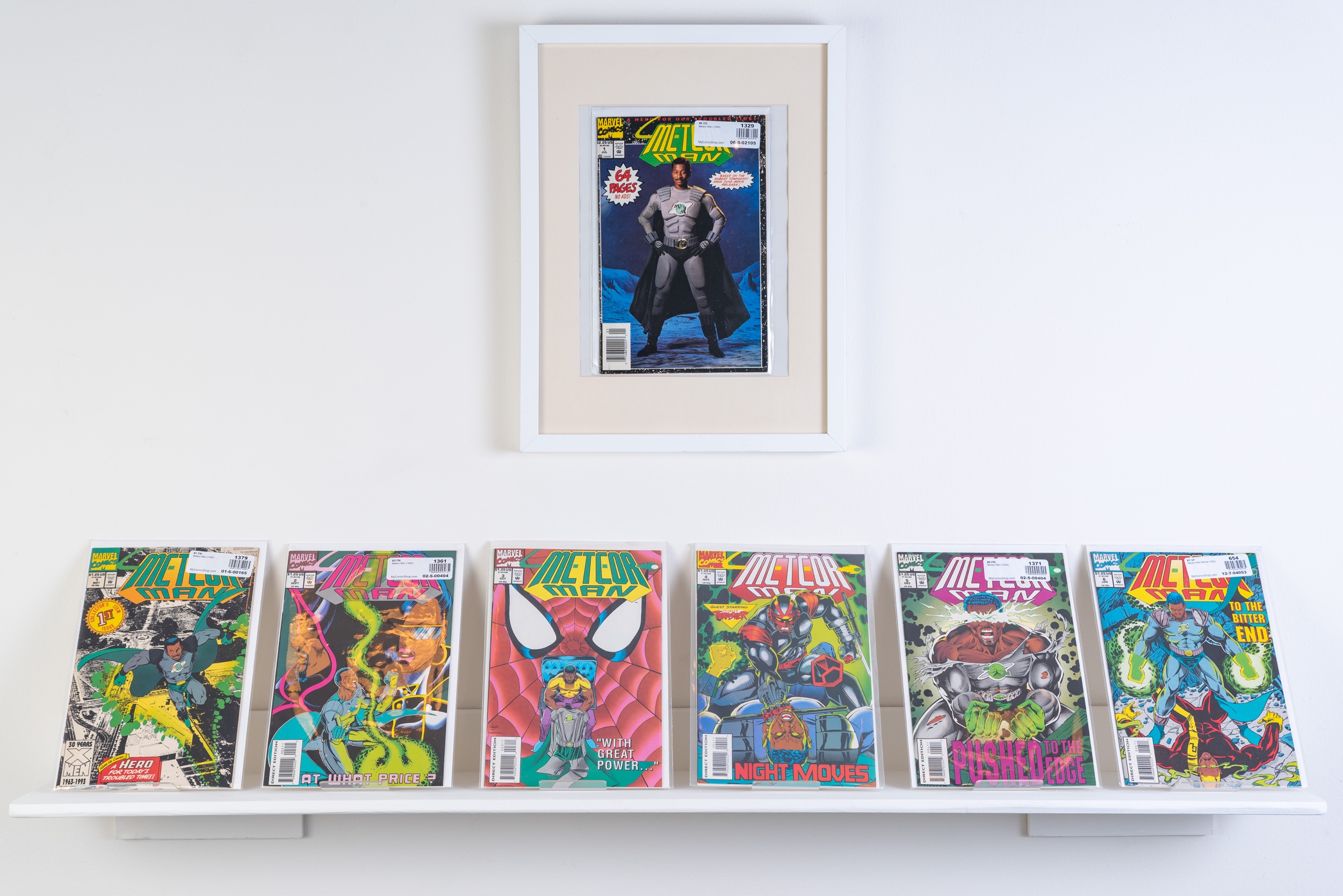GENERAL STATEMENT
There’s nothing better than…
Turning things upside down..
Guy Miller is an artist based in Delaware whose career spans the vibrant art scene of the DMV (D.C., Maryland, Virginia) area and beyond. Known for his thought-provoking exploration of Black cinema and media, Miller's artwork examines the evolution of these forms, highlighting varying levels of progressiveness throughout history. By delving into themes of identity, stereotypes, tropes, and oppression, his work investigates how Black characters and narratives have been represented and reshaped over time.
Miller is affiliated with the Delaware Division of the Arts (DDOA) and has received several awards that acknowledge his innovative approach and commitment to meaningful storytelling through art. His achievements in the DMV area include participating in numerous exhibitions and collaborations with local artists and organizations, where he has made significant contributions to discussions about representation and identity.
Critically analyzing the impact of societal norms on portrayals of Black identity, Miller reveals how harmful stereotypes have often overshadowed the complexities of these narratives. His exhibitions feature a combination of contemporary critique and historical context, celebrating key moments of cultural advancement and spotlighting filmmakers, actors, and works that have pushed boundaries and challenged the status quo.
Through his compelling body of work, Miller serves as a nuanced reflection on how media has both mirrored and influenced the Black experience, emphasizing the ongoing struggle for authentic and empowered representation in film and television. His contributions to the art community, particularly in the DMV and Delaware, foster dialogue around the importance of diverse representation in the arts and invite viewers to engage deeply with the cultural narratives that shape our understanding of race.
METEOR MAN INSTALLATION
1993’s “The Meteor Man”, starring and produced by Robert Townsend, was the first movie to understand that there really was an audience for a black superhero. It didn’t find that audience, but other movies would. In just the few years after “The Meteor Man”, we got Blankman, Spawn, Steel, and Blade—all movies of wildly varying tone and quality, but all movies about black superheroes. The Meteor Man started something.... As far as legacies go, that’s not bad.
By fabricating the success of this overlooked 1990’s superhero film, this work addresses issues of representation for Blacks in pop Culture, and Society’s reluctance to depict and receive positivity through blackness. Through production of a lunch box, a Pez Dispenser, and Movie Poster light boxes, an alternate reality in which the idea of a black superhero film is celebrated 25 years before 2016s “Black Panther” is presented in a non fiction museum presentation. Other topics addressed in the work are, 90s nostalgia, consumer products and their effects, societal progression, and identity.
BLACK MILK
Through means of sculpture, drawing, and installation, my work deconstructs complicated racial disparity/oppression in hopes to make them “digestible” for even the most apprehensive viewer. My work uses pre existing associations with milk, products, cows and pop culture icons as vehicles to deliver my message. “Black Milk Installation 1” involves a kitchen scenery comprised of antique toy appliances. 1950’s nostalgia acts as an appetizer. Inside lies a smaller than life dinning table set for two with traditional milk bottles housing a black liquid waiting to be encountered. The bottles, labeled with iconic black figures, are accompanied by nutrition facts that announce the benefits of consumption. In plain sight are words such as Crazy, Karate, GetonUp, Say it Loud and Pride, highlighting lyrics and attributes of the great James Brown and other black icons. Plagues such as systemic oppression, the educational omission of black history, and western slavery are identified. Nearby, shelves adorn the walls showcasing cultural traditions and foods such as blackeyed peas. “Giant Can of Tarnation Milk” is a sculptural piece that acts as an allegory for the earlier mentioned oppression of my people. An upscale in the size of the can reflects the blatancy of the issue being addressed/ignored and presents an “in your face” experience that challenges the latter. On the back, homogenization is defined as a process which exists with the purpose of breaking the fat molecules in milk down so much so that they will never rise to the top and form a layer of cream!



